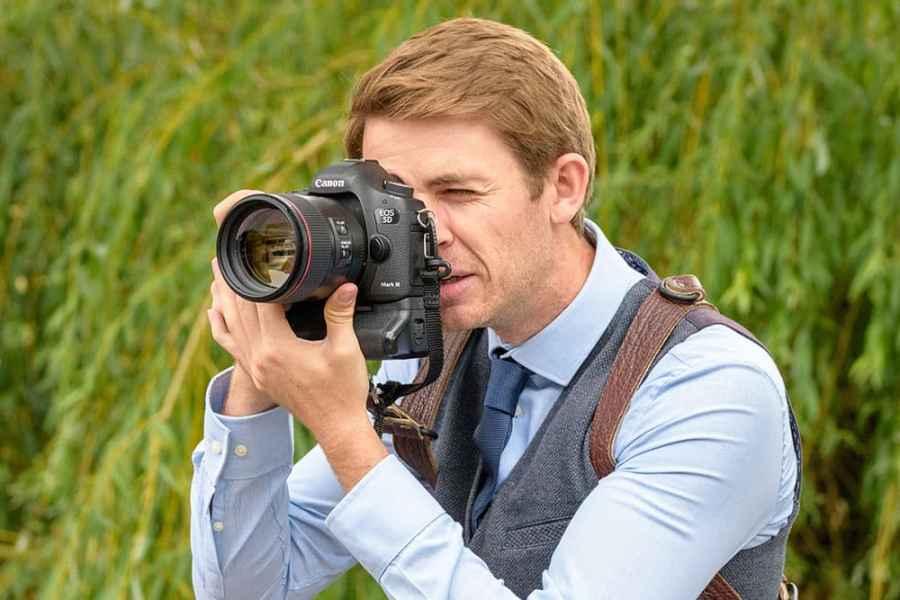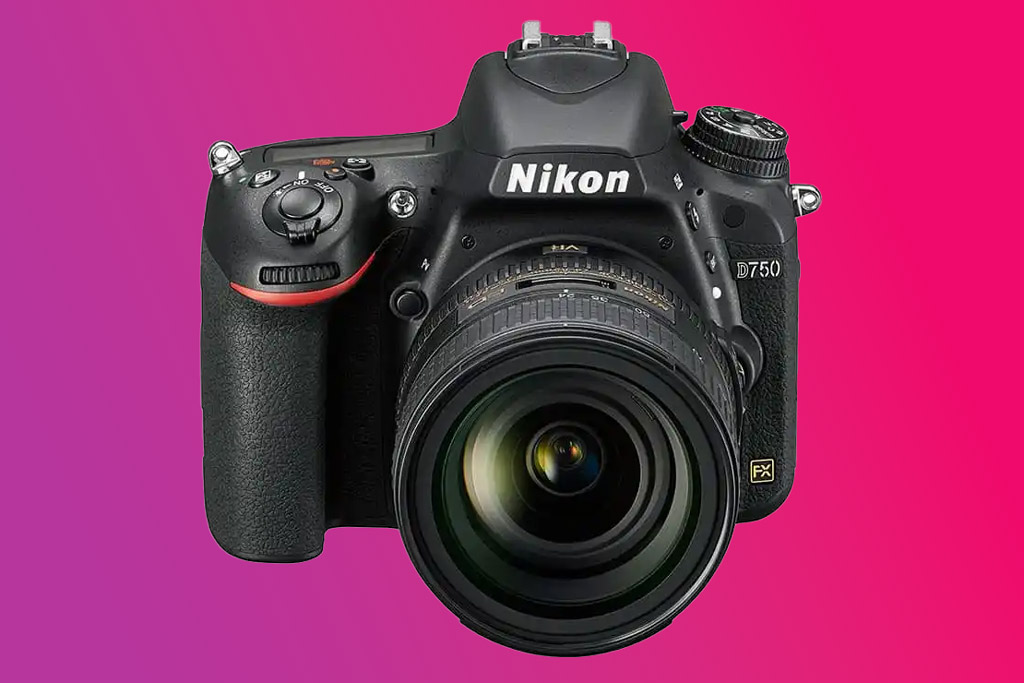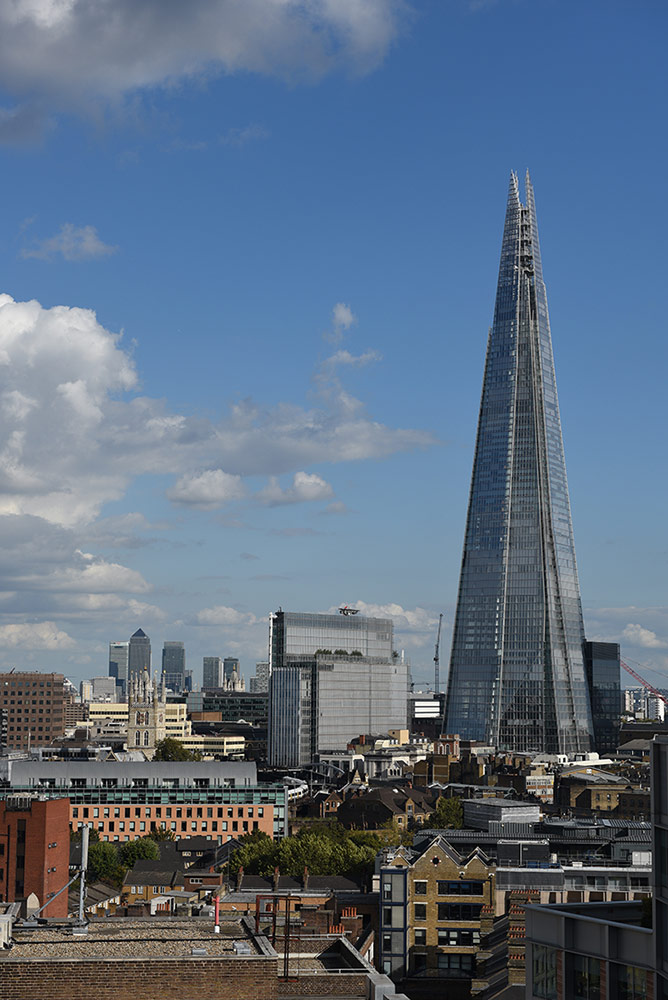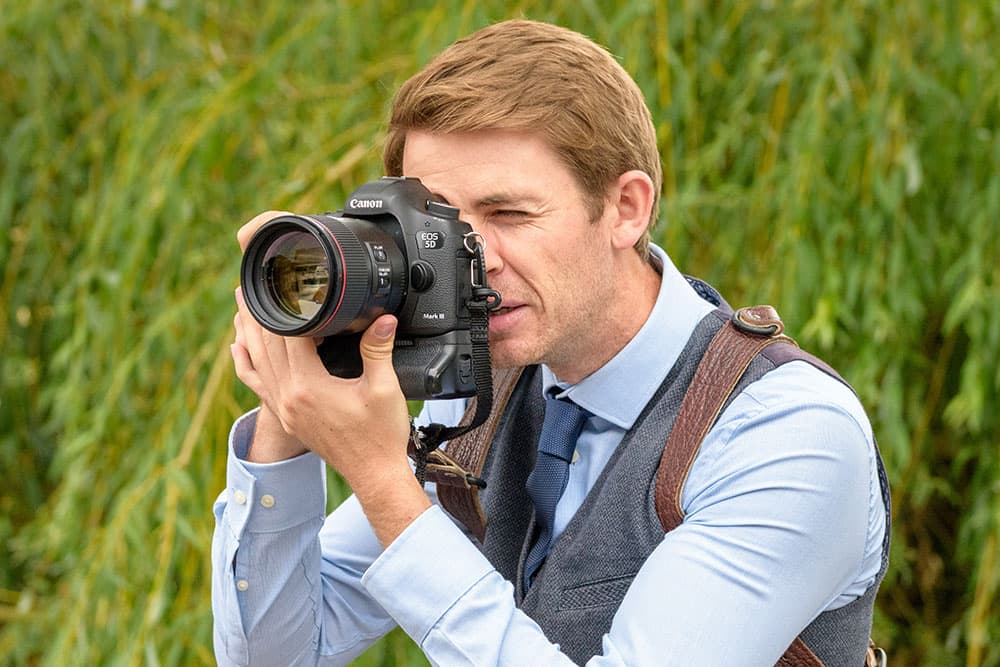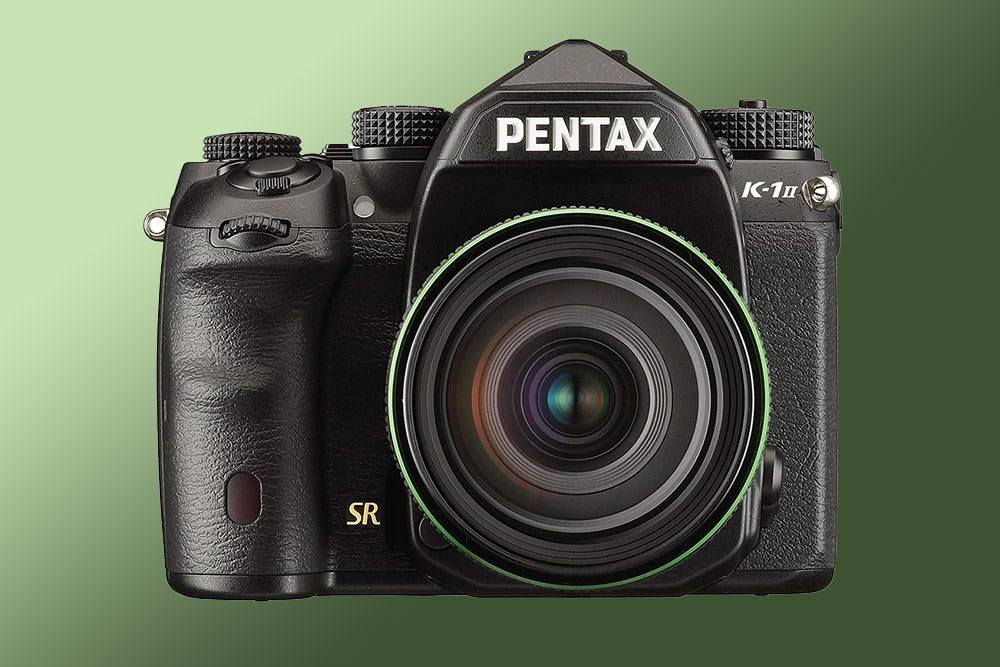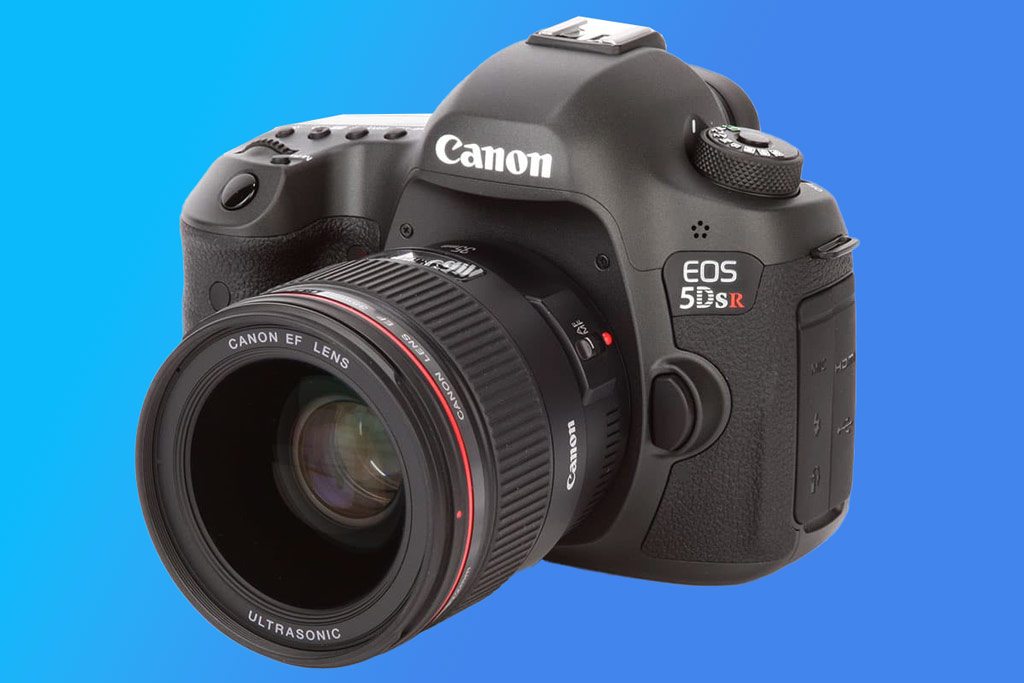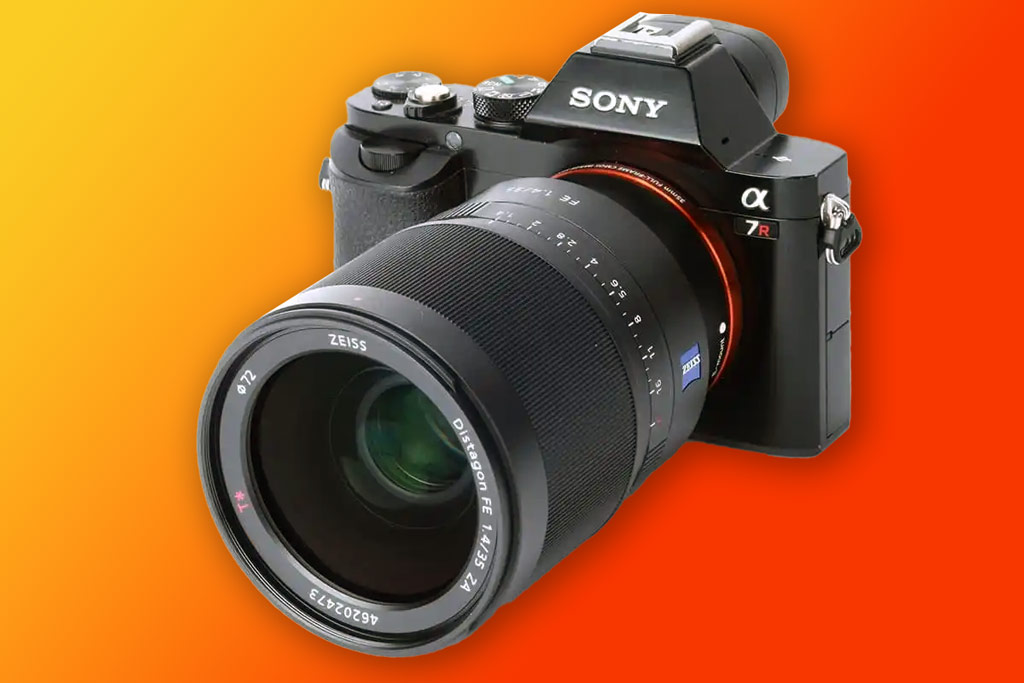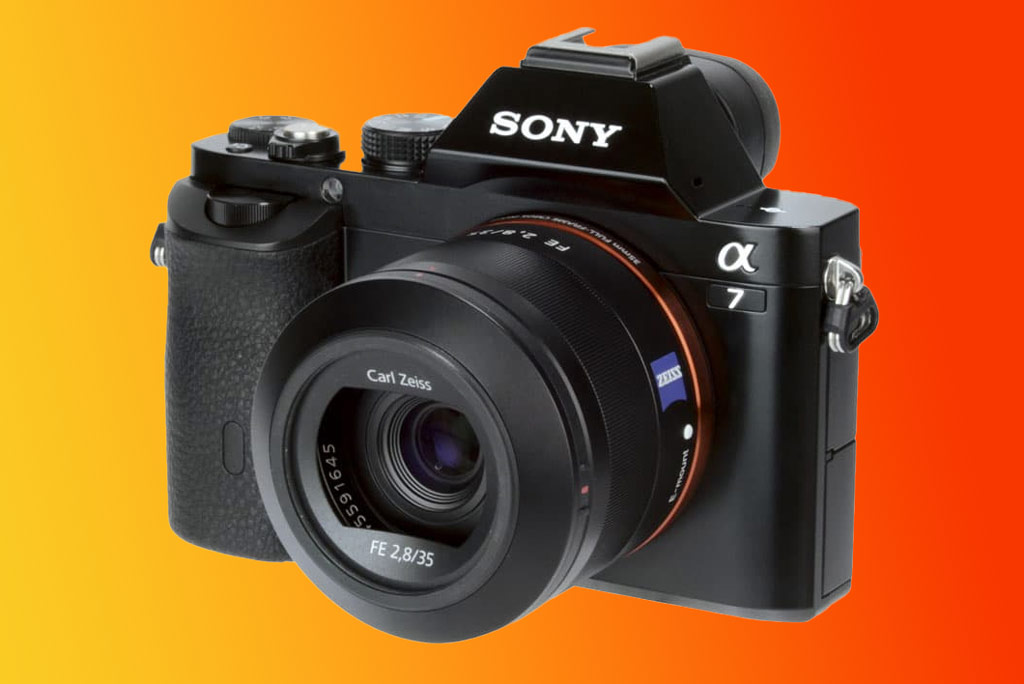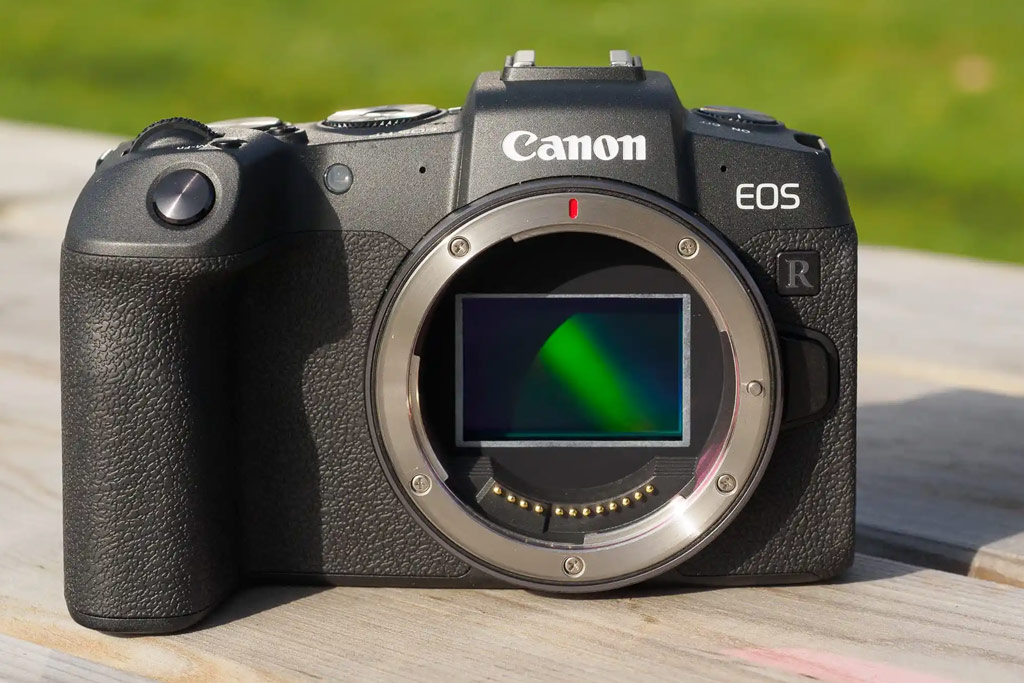Buying second-hand and used is a great way to save on cameras. Here’s our guide to some top second-hand, full-frame camera bargains.
If you’ve always wanted to use a full-frame camera but have been put off by the price, then you’re in luck! In this guide, we reveal the absolute best used and second-hand full-frame camera bargains on the market. Whether you want a DSLR or a mirrorless full-frame camera, these are the models that will give you incredible value for money and a pro-like experience for a fraction of the retail price.
New versions of cameras come out roughly every year or two, and the little secret that many manufacturers don’t like to disclose is that cameras have been very, very good for some time now. Unless you’re a professional looking to shoot the Olympic Games, you really don’t need the latest cutting-edge autofocus and resolution technology from the likes of the Nikon Z8 or Canon EOS R3.
But that doesn’t mean you have to settle for a smaller-sensor camera – simply choose a second-hand model and use the same camera professionals were buying four or five years ago. You may have noticed they were capturing fantastic images then, too! We go into more detail on how to choose the best second-hand full-frame camera at the bottom of the page.
Overview
Looking for the best deal on second-hand cameras? Not only will you find the best second-hand cameras, but you’ll also find some of the best cheap used camera deals, as our ‘Buy now’ buttons are set up to take you to the best prices from trusted retailers, plus you’ll find a list of other retailers below each camera, so you can find the right deal for you.
Second-hand full-frame DSLR camera bargains
- Best enthusiast Nikon DSLR: Nikon D750 – Buy now
- Cheapest full-frame DSLR: Canon EOS 5D – Buy now
- Cheapest full-frame Nikon DSLR: Nikon D700 – Buy now
- Best Canon all-rounder: Canon EOS 5D Mark III – Buy now
- Best full-frame from Pentax: Pentax K-1 Mark II – Buy now
- Best high-resolution full-frame DSLR: Canon EOS 5DS R – Buy now
Second-hand full-frame mirrorless camera bargains
- Best all-rounder mirrorless: Sony Alpha A7R – Buy now
- Cheapest full-frame mirrorless camera: Sony Alpha A7 – Buy now
- Best entry level mirrorless: Canon EOS RP – Buy now
- Best second-hand full-frame camera with IBIS: Sony Alpha A7 II – Buy now
Why you can trust Amateur Photographer…
We spend many hours testing every product we recommend, in detail, in a variety of situations and shooting scenarios, and only use experts for our reviews, so you can be sure that you’re getting the best products. Find out more about our expert writers.
Second-hand full-frame DSLR camera bargains
Best enthusiast Nikon DSLR: Nikon D750
Amateur Photographer verdict
The D750 is aimed very much at serious enthusiasts, for whom it should still be an excellent all-rounder capable of taking on a wide range of subjects.- 24.3-million-pixel sensor
- Built-in Wi-fi
- Tiltable LCD
- Maximum 1/4000 Shutter Speed
- No AF-On button
- No GPS
At a glance:
- Price from $730 / £640 (in excellent condition)
- Sensor 24.3MP full-frame CMOS
- Sensitivity ISO 100-12,800 (ISO 50-51,200 extended)
- Continuous shooting 6.5fps
- Video 1080p Full HD at 60fps
- Rear display Tilting 3.2-inch/1.2m-dot LCD
- Viewfinder Pentaprism, 100% coverage at 0.7x
Released towards the end of 2014, the Nikon D750 is a solidly built and highly customisable full-frame DSLR aimed at the enthusiast and semi-pro market. At the time of its launch, a new D750 body would have set you back £1,800, a figure that has since fallen dramatically. It is now possible to pick-up a used camera body for roughly a third of that price, depending on its condition and shutter count.
So, what do you get for your money? The D750 is built around a 24.3MP full-frame CMOS sensor and a Nikon Expeed 4 image processor. While this chip isn’t as powerful as the Expeed 6 used in the D750’s successor – the more recent Nikon D780 – it’s nonetheless highly capable; facilitating a maximum continuous shooting speed of 6.5fps, a native sensitivity range of ISO 100-12,800, plus expanded settings up to the equivalent of ISO 51,200.
Movie capture, meanwhile, extends to a maximum of 1080p Full HD at 60fps with external microphone and headphone inputs provided for enhanced audio capture and real-time monitoring.
Autofocus through the D750’s optical viewfinder is taken care of via Nikon’s Multi-CAM 3500 II phase-detection module. This provides 51 individual AF points in the centre of the viewfinder. While coverage doesn’t extend to the boundaries of the frame, performance is nonetheless speedy and accurate with the 3D tracking mode exceptionally good at capturing moving subjects.
Switching to live view, the D750 employs on-sensor contrast-detect AF with coverage across the entire frame. Performance is again relatively speedy, although not quite as fast as many mirrorless cameras – or indeed those Canon DSLRs equipped with Dual Pixel AF technology.
Elsewhere, the D750 also comes equipped with built-in Wi-Fi connectivity, twin SDXC (UHS-I) card slots, a 3-inch/1.2m-dot tilting rear LCD display and a large and bright pentaprism viewfinder that provides 100% coverage.
Although several years old now, image quality from the D750 remains nothing short of excellent. Indeed, while more modern Nikon DSLRs might provide greater speed and performance benefits, you’ll be hard pressed to see much difference in critical image quality at the same resolution. In addition to 12-bit and 14-bit uncompressed raw capture, the D750 provides a generous array of JPEG image processing tools and picture control modes that can be employed to get the look you want straight from camera.
You’ll also benefit from a wide-range of Nikon F-mount lenses.
Build quality
Regarding build quality, the D750 is fully weather-sealed and also benefits from magnesium alloy construction. This provides excellent protection from everyday knocks, while giving the camera a very professional feel in the hand. Buttons are well spaced and clearly labelled, and for anyone coming from another Nikon DSLR, the layout should feel instantly familiar.
While the Nikon D750 might be starting to show its age, especially when compared directly to the D780, it remains an excellent DSLR for both enthusiasts looking to go full-frame on a budget and seasoned pros looking for a solid backup body.
The release of the D780 also means that there should be good availability of Nikon D750s on the second-hand and used market as people upgrade. If you’re in the market for a second-hand full-frame DSLR that’s capable of fantastic image quality, with extensive customisation options and tank-like build quality, the Nikon D750 comes highly recommended and is well worth considering.
For more Nikon options, have a look at the best Nikon DSLRs.
Cheapest full-frame Canon DSLR: Canon EOS 5D

Amateur Photographer verdict
A resolution of 12.8-megapixels is low by today’s standards, but unless you want to make big prints or need to crop tightly into your images, it’s still adequate and remains a good option.- The first ‘affordable’ full-frame DSLR
- Robust, hard-wearing body
- Excellent image quality at low ISO
- No weather-sealing
- Basic 9-point AF system
- No live view, video, Wi-Fi or GPS
At a glance:
- Price around $190 / £150 (in good/excellent condition)
- Sensor 12.8MP CMOS full-frame
- Sensitivity ISO 100-1600 (ISO 50-3200 extended)
- Continuous shooting 3fps (17 frame raw buffer depth)
- Video Not available
- Rear display 2.5-inch, 230k-dot fixed LCD screen
- Viewfinder Pentaprism, 96% coverage at 0.71x
Released in 2005, Canon’s original EOS 5D is credited as the first affordable full-frame DSLR to hit the market. While a brand new 5D body cost around $3,299 / £2,500 at the time of its launch, these days it’s possible to source a second-hand example in good condition for at least 10x less!
Given its age, it is no surprise to find that many of the 5D’s core specs – such as its nine-point AF module and 2.5-inch/233k-dot LCD display – look out-of-date by modern DSLR standards. That said, the 5D’s 12.8MP sensor is still capable of great image quality in the right hands.
To get the most out of the camera, you’ll most likely need to shoot at lower ISO speeds, or be prepared to process the raw files yourself. But if you’ve got the time to do this, it’s likely you’ll benefit from the latest raw processing technology found in new photo editing software.
Another nice thing about the Canon EOS 5D is that you can pair it with a 50mm prime lens, which can be found for bargain prices. Read our second-hand classic: Canon EOS 5D feature
Cheapest full-frame Nikon DSLR: Nikon D700
Amateur Photographer verdict
The D700 takes the best bits of the Nikon D3, including the sensor, autofocus, white balance and metering system. It’s a smaller, lighter, and less expensive body, aimed at enthusiast photographers.- Robust, tank-like build quality
- 1,000-shot battery life
- Excellent handling
- 51-point autofocus system
- Loud and noisy shutter
- Single card slot
- Requires MB-D10 battery pack to shoot at up to 8fps
At a glance:
- Price around $250 / £300 (in good condition)
- Sensor 12.1MP full-frame CMOS
- Sensitivity ISO 200-6400 (ISO 100-25,600 extended)
- Continuous shooting 5fps (8fps with MB-D10 battery pack)
- Video Not available
- Rear display 3-inch/921k-dot LCD
- Viewfinder Pentaprism, 95% coverage at 0.72x
Released in 2008, the Nikon D700 was essentially Nikon’s answer to the phenomenally popular Canon EOS 5D. Built around the same 12.1MP full-frame CMOS sensor used in the then-flagship Nikon D3 DSLR, the D700 further benefits from a 51-point AF system, a pop-up flash that can be used as a commander off-camera Creative Lighting System, and weather-sealed magnesium alloy construction.
Two things to note are that the D700 doesn’t provide any video recording functionality, and only comes with a single CF-type card slot, which means it cannot take regular SD cards. Other than that, the D700 remains an exceptionally capable camera.
The Nikon D700 is rated as having a shutter-life of 150,000 actuations (or shots), so the smaller the shutter count on the camera you’re buying, the more potential it has for lasting longer. The camera has excellent build quality and 1000 shot battery life, making it a camera you can rely on. As with other old digital cameras, you’ll benefit from processing the raw files to get the best out of this camera, particularly if shooting at higher ISO speeds.
Read our second-hand classic: Nikon D700 feature
Best Canon all-rounder: Canon EOS 5D Mark III
Amateur Photographer verdict
Overall, it is difficult to fault the 5D Mark III, given its current price on the second-hand market. For those on a budget looking for their first full-frame DSLR, it offers great value for money.- Good budget option
- Full HD video recording
- Impressive noise performance
- 61-point AF system
- Limited nine zone AF
At a glance:
- Price around $630 / £490 (in excellent/good condition)
- Sensor 22.3MP full-frame CMOS
- Sensitivity 100-25,600 (ISO 50-102,800 extended)
- Continuous shooting 6fps
- Video 1080p Full HD at 60fps
- Rear display 3.2-inch/1.040m-dots
- Viewfinder Pentaprism, 100% coverage at 0.71x
At the time of its release in 2012, a brand new 5D Mark III body sold for around $3,499 / £2,250 (body only). However, it’s now possible to find second-hand bodies in excellent condition with under 40K shutter actuations for around $750.
Built around a 22.2MP full-frame CMOS sensor and Canon’s DIGIC 5+ image processor, the 5D Mark III is a highly versatile DSLR that provides an advanced feature set and plenty of customisation options. The camera gives impressive noise performance, with a vastly improved ISO range compared to the first 5D.
There are a wide range of Canon EF-mount lenses available, with budget options, all the way up to premium tilt-shift lenses. Canon’s L-series lenses are amongst some of the best Canon EF-mount lenses.
While Canon’s ground-breaking Dual Pixel AF technology wasn’t introduced to the 5D range until the 5D Mark IV, the 5D Mark III nonetheless inherits a range of high-end specs from the EOS-1D X, including a 61-point AF system, alongside customisable tracking options.
For more options have a look at the best Canon DSLRs.
Read our Canon EOS 5D Mark III Review
Best full-frame from Pentax: Pentax K-1 Mark II
Amateur Photographer verdict
This full-frame DSLR flagship is weather-resistant, highly sensitive and among the toughest Pentax cameras.- Excellent images in any light
- Bright and big optical viewfinder
- Clever vari-angle-touchscreen design
- Excellent build quality
- Only HD video up to 60p
- Modest upgrade from the K-1
- Middling battery life
- Heavy
At a glance:
- $1,300 / £1,100 used, body only
- 36.4MP full-frame
- 3.2in 1.04m-dot vari-angle-touchscreen
- Sensor-shift stabilisation & GPS
- Pentaprism OVF with 0.7x mag and 100% FOV
- Weather-resistant
The most recent Pentax K-1 II represents a modest upgrade from its predecessor the K-1, with the most notable improvement being the increased sensitivity by 2EV to a whopping extended ISO 819,200, however, the original K-1 is becoming increasingly more difficult to find second-hand.
With a large pentaprism optical viewfinder and a 36MP full-frame sensor, the K-1 II performs excellently in low light. Elsewhere, the K-1 also benefits from Pentax’s Pixel Shift technology that’s designed to improve the resolving power of the sensor, along with built-in Shake Reduction image stabilisation technology. This is topped with GPS and a unique feature called Astrotracer that arguably makes the K-1 II the DSLR choice for astrophotography. There are also some great value, high-quality Pentax K-mount lenses available, so landscape and portrait photographers are very well catered for.
Launched with a body-only price of $1,799 / £1,999 in 2018, it’s now possible to pick up a second-hand K-1 II body for roughly half that price, depending on its general condition and shutter count.
Have a look at the limited edition silver Pentax K-1 Mark II and lenses.
Best high-resolution full-frame DSLR: Canon EOS 5DS R
Amateur Photographer verdict
Landscape and studio photographers in particular will surely love the addictive level of detail that the 5DS R can deliver.- Extraordinary image quality
- Highly refined control layout and user interface
- Extremely accurate autofocus system
- Rugged, professional-level construction
- Fixed rear screen is inconvenient for tripod work
- Relatively limited ISO range
- Huge file sizes
At a glance:
- Price around $1,375 / £1,000 (in excellent/good condition)
- Sensor 50.6MP full-frame CMOS
- Sensitivity ISO 100-6400 (ISO 50-12,800 expanded)
- Continuous shooting 5fps
- Video 1080p Full HD at 30fps
- Rear display 3.2-inch/1.04m-dots
- Viewfinder Pentaprism, 0.71x magnification
The Canon EOS 5DS R is among the most expensive of our full-frame bargains picks, but when you consider that it launched with an RRP of $3,899 / £3,200, that second-hand price of around 3x less starts to look quite tasty.
Launched as a pair with the Canon EOS 5DS in 2015, the EOS 5DS R represented a new frontier of DSLR resolution, boasting a sensor with a whopping 50.6MP at its disposal. That’s still at the upper-end of full-frame resolutions today, and makes the EOS 5DS R a seriously tempting prospect for landscape photography.
Constructed to meet the needs of professional photographers, the Canon EOS 5DS R is built like a tank. It’s designed in every way to make the most of all that detail, with a spring-less mirror assembly that minimises vibrations (which really do matter at 50MP), a reinforced tripod mount, and a USB 3.0 connection for fast image transfer. For high-resolution photography, this is one of the savviest, smartest second-hand buys you can make.
As mentioned, the EOS 5DS R was launched in a pair with the EOS 5DS. The main difference between the two is that the EOS 5DS R cancels out the effect of its low-pass cancellation filter, enabling higher resolution at the cost of a slightly increased risk of moiré patterning occurring in images. If you see the EOS 5DS for a good price, it’s also well worth snapping up.
Read our Canon EOS 5DS R review
Second-hand full-frame mirrorless camera bargains
Best all-rounder mirrorless: Sony Alpha A7R
Amateur Photographer verdict
The Sony Alpha 7R is good enough for most situations. Small and lightweight with a full-frame sensor, the Alpha 7R is a trustworthy option for videographers and photographers.- Small and lightweight
- Very good image quality
- 1080p Full HD video at up to 60fps
- Resistant to dust and moisture
- Not designed for sports or wildlife
At a glance:
- Price around $479 / £490 (in excellent/good condition)
- Sensor 36.4MP full-frame CMOS
- Sensitivity ISO 50-25,600
- Continuous shooting 4fps
- Video 1080p Full HD at 60fps
- Rear display Tiltable, 3-inch, 921k-dot LCD
- Viewfinder 2.35m-dot EVF
Just as the original Canon 5D brought full-frame DSLR technology into the realm of relative affordability, the Sony A7 and A7R performed the same feat for full-frame mirrorless cameras. Indeed, at the time of their release in 2013, the only similarly small full-frame option on the market was the Leica M9, which, at nearly $5000/£5000, was almost triple the price of the A7R body-only launch price.
Fast-forward twelve years and the A7 series is now in its fifth generation, with the latest A7R V model sporting a 61MP back-illuminated full-frame sensor, albeit at a cost of nearly $4,000 body-only.
For those looking to reap the benefits of Sony’s A7 series without breaking the bank, the original A7R can now be picked up very cheaply second-hand. This might require some patience in order to secure a good example as the first-generation A7R doesn’t appear in the second-hand market as often as many more recent models.
While the 24.3MP A7 was positioned as an enthusiast-grade all-rounder, the A7R comes equipped with a 36.4MP sensor, marking it out as an ideal choice for those prioritising resolution. In keeping with this, the A7R does without a low-pass filter in order to enhance the resolution of fine detail. The A7R’s 36.4MP full-frame CMOS sensor is paired with a Sony BIONZ X image processor that facilitates a sensitivity range of ISO 100-25,600 (expandable to ISO 50) and a maximum continuous shooting speed of 4fps.
Unlike the standard A7 with its hybrid (phase and contrast detect) AF module, the A7R’s 25-point AF system employs only contrast detect technology to ascertain focus. As a result, it’s a little slower than its A7 sibling. The A7R wasn’t designed as an action or sports camera, but its AF performance is speedy enough in all but the dimmest of conditions; adequate for all but the most demanding users. Most other cameras that rely solely on contrast-detect tend to struggle with this, too.
While the ability to record 4K movies wasn’t introduced until the A7R Mark II, the A7R does provide 1080p Full HD video capture at up to 60fps and also sports microphone and headphone jacks on the side.
Build quality
Constructed from magnesium alloy, the A7R feels solidly built in the hand and is designed to be resistant to dust and moisture. That said, its plastic port covers at the side are a bit flimsy and have since been improved on the A7R IV.
Image quality from the A7R remains very good, even by today’s standards, especially when the camera is used at lower sensitivity settings. While some noise does begin to creep into images at ISO 800, the camera generally keeps the unwanted side effects of noise at bay.
Dynamic range, although not quite on a par with the A7, is also impressive given the camera’s high-resolution sensor, while automatic white balance can be relied upon to deliver consistently true-to-life colour. It offers extremely good image quality for the price, and there is a wide-range of Sony E-mount lenses available.
Cheapest full-frame mirrorless camera: Sony Alpha A7
Amateur Photographer verdict
The Alpha 7 is a great camera for photo enthusiasts looking for a lightweight camera that produces excellent images, but be prepared to invest in Zeiss prime lenses to do the sensor justice.- Cheapest full-frame Sony
- Intuitive menu system
- No 5-axis in-body image stabilisation (IBIS)
- Is slow to focus on moving subjects
- Limited lens options
At a glance:
- Price $500 / £424 (in excellent condition)
- Sensor 24.3MP full-frame CMOS
- Sensitivity ISO 100-25,600 (ISO 50 expanded)
- Continuous shooting 5fps
- Video 1080p Full HD at 60fps
- Rear display 3in/1.22m-dot LCD
- Viewfinder 2.4m-dot EVF
Sony has long offered three distinct models within its Alpha 7 range, each of which caters to a slightly different target audience. Whereas A7R models are designed for maximum resolution and A7S models prioritise video and low-light shooting performance, the regular A7 has always been about providing an all-round package.
Released in 2013 alongside the A7R that we’ve already covered within this round-up, the A7 was notable for being the first affordable full-frame mirrorless camera to hit the market.
The good news is that used Sony A7 cameras can easily be picked up for under $500 / £500 these days, although you may need to shop around as stock levels have dropped. While subsequent models in the A7 range have undoubtedly added useful new features and come equipped with more up-to-date hardware, the A7 remains an extremely capable camera and the cheapest full-frame Sony.
Built around a 24.3MP full-frame sensor and Sony’s BIONZ X processor, the A7 further benefits from hybrid AF technology that combines 117 on-sensor phase-detection pixels with a further 25 contrast-detect points for frame-wide coverage.
Worth noting is that the Sony A7 II and Sony A7R II introduced 5-axis in-body image stabilisation (IBIS), as well as improved handling, so this is something to be aware of, particularly if you have the budget to spend a bit more.
Best entry level mirrorless: Canon EOS RP
Amateur Photographer verdict
With the Canon EOS RP, you can expect to get full-frame image quality in a small, lightweight package that’s a pleasure to shoot with.- Easy-to-use control layout with plenty of customisation
- Well-integrated touchscreen interface
- Compatible with EF-mount SLR lenses via supplied adapter
- Fully-articulated screen affords extra compositional flexibility
- No in-body image stabilisation
- Over-simplified controls
- Viewfinder visibility is poor in bright light
At a glance:
- Price $900 / £1,049 (in excellent condition)
- Sensor 26.2MP full-frame CMOS
- Sensitivity ISO 100-40,000 (ISO 50-102,400 extended)
- Continuous shooting 5fps
- Video 4K at 25fps
- Rear display Vari-angle 3-inch/1.04m-dot LCD touchscreen
- Viewfinder 2.36m-dot EVF
The Canon RP is an entry-level full-frame mirrorless camera that’s designed to appeal to those looking to go full-frame on a budget. Released in 2019 with a body-only price of $1,300 / £1,400, used RP bodies can now be picked up for much less in ‘excellent’ condition.
For the money, you get a super compact full-frame camera that’s actually lighter than Canon’s 800D APS-C DSLR. While controls and features have been stripped back to increase the RP’s appeal to novice users, the camera does come with Canon’s Dual Pixel AF technology and 4K video recording abilities – albeit at a rather limiting 25fps.
Designed to be used with RF-mount mirrorless lenses, the RP was sold with an EF lens mount adapter in the box.
Best second-hand full-frame camera with IBIS: Sony Alpha A7 II
Amateur Photographer verdict
The Sony Alpha 7 II is a hugely compelling option for serious enthusiast photographers.- The first full-frame CSC to feature 5-axis in-camera image stabilisation
- Inherits the excellent OLED electronic viewfinder from the Alpha 7
- Redesigned handgrip and control layout enhances operation and handling
- Loud shutter with no dampening or silent shooting mode available
- Control wheel at the rear is rather small and fiddly to use
- Movie-record button could be better positioned for videographers
At a glance:
- Price $920 / £550 (in excellent condition)
- Sensor 24.3MP full-frame CMOS
- Sensitivity ISO 100-25,600 (ISO 50-102,400 extended)
- Continuous shooting 5fps
- Video 1080p Full HD at 50fps
- Rear display Fixed 3-inch/1.23m- dot LCD
- Viewfinder 2.36M dot OLED
Ten years old but still a strong contender, this was the first full-frame mirrorless camera to feature 5-axis in-body image stabilisation – something that quickly became a must-have feature in mirrorless cameras. It also inherits the excellent OLED electronic viewfinder from the Alpha 7 and a redesigned handgrip and control layout enhances operation and handling.
The biggest drawbacks are the relatively loud shutter and the fiddly rear control wheel, so it’s not the best choice if you photograph timid wildlife or go in for candid street photography. Otherwise, the A7 II is a solid performer and benefits from the wide range of Sony E-mount lenses.
Read our Sony Alpha 7 II Review
Why use full-frame at all?
The larger sensor size carries a number of advantages and has been popular with professionals and high-end enthusiasts ever since the arrival of the Canon EOS 5D in 2005. A large full-frame sensor can give you greater dynamic range as the individual photosites that make up the pixels are generally larger than those found in smaller sensors. This means cleaner images with less noise even at high ISOs, which makes for better low-light performance.
Full-frame sensors are also better for creating shallow depth of field in images, which is perfect for portraits. For a complete run-down of the advantages (and disadvantages) of full-frame see our comprehensive guide to full-frame vs APS-C.
How to find the best second-hand full-frame camera bargains
Buying second-hand is a great way to save some cash, but it pays to do it right. Reputable second-hand dealers such as Park Cameras, Wex, Ffordes, LCE, CameraWorld, and MPB (or Adorama, B&H Photo Video, and MPB in the USA) will offer decent warranties on used gear, meaning that you’ve got some cover for any faults in the camera that may develop.
We’ve included both DSLRs and mirrorless cameras on this list – some people prefer the rugged build and optical viewfinders of DSLRs, while others like the lightweight agility and super-fast focusing of mirrorless.
If you go for a DSLR, make sure you check the shutter actuation count, which should be listed on the dealer’s website. We would recommend you think carefully before getting a pro body with more than 50,000 shutter actuations, or a non-pro body with more than 20,000. For that, the price had better be really good.
We’ve taken a hard look at the best DSLR and mirrorless second-hand full-frame bargains you can find right now. These are all cameras we reviewed on first release, and we have returned to many of them since; so each of them here comes with our genuine, informed recommendation.
Want more choice? Check out our general guide to the best second-hand cameras, which includes APS-C models as well as full-frame, and we have a guide to how to build a complete second-hand system for under $1,000/£1,000. We also have some tips on how to get the best prices for used cameras and lenses.
Disclaimer: prices and retailers of the cameras in this article were chosen based on those who had stocks of the specific cameras at the time of writing this article. The availability of stocks and exactly who has certain cameras varies, naturally, so please do check all the latest stockists and prices before making any camera purchase.
How we test cameras
We test cameras primarily by using them to take photographs and video in a wide range of real-world situations. We evaluate their control layouts and handling, and the usability of their viewfinders and screens. We assess their autofocus across a range of different subjects and shooting scenarios and check their continuous shooting capabilities.
We also examine the effectiveness of their image stabilisation systems. Last but by no means least, we critically evaluate the image quality, in both JPEG and raw, including resolution, high-ISO noise, and dynamic range. We then take all these factors into account, along with such things as portability and lens systems, when giving our final conclusion and score. You’ll find the full breakdown of how each camera has performed in our full reviews.
Further reading:
- Best full-frame mirrorless cameras
- Which maker has the best range of full-frame mirrorless lenses?
- What are the best cheap full-frame cameras?
- Best second-hand full-frame mirrorless cameras

